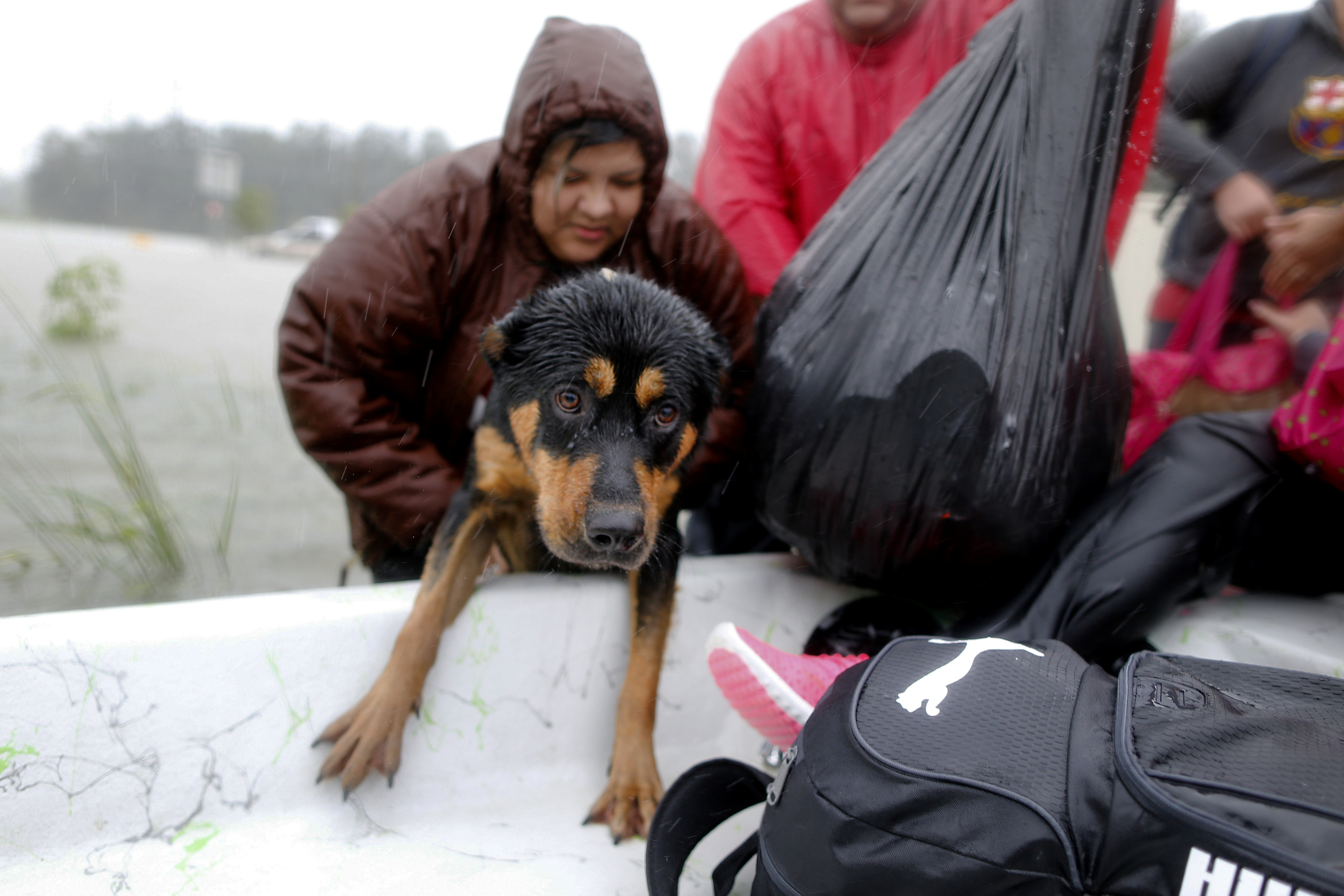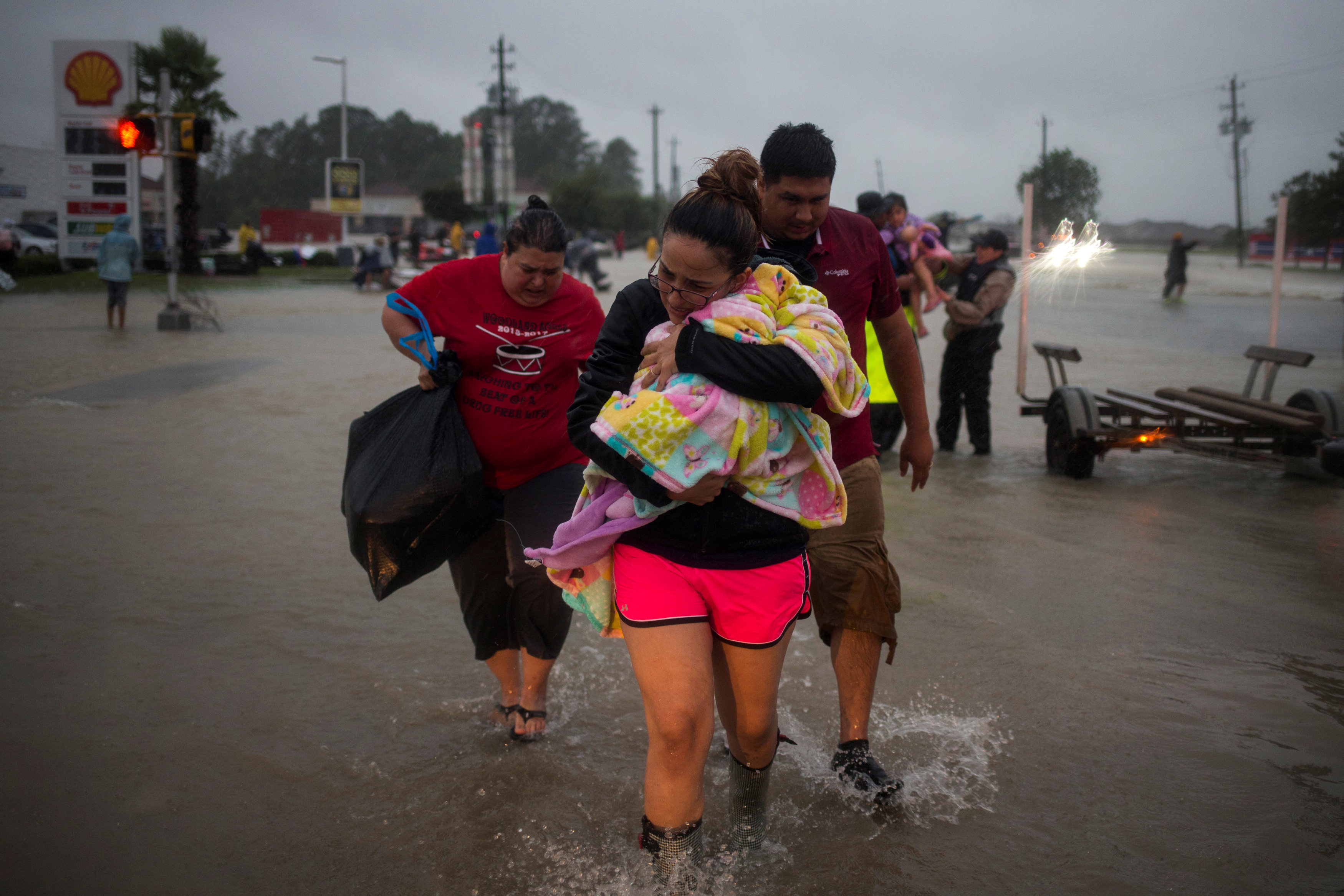
By Emily Flitter and Peter Henderson
ORANGE, Texas/HOUSTON (Reuters) – Rescuers searched flooded sections of southeastern Texas for people trapped by Hurricane Harvey’s deluge on Friday, and Houston’s mayor warned residents of the city’s west that their neighborhoods may remain underwater for two weeks.
The storm, one of the costliest to hit the United States, has displaced more than 1 million people, with up to 44 feared dead from flooding that paralyzed Houston, swelled river levels to record highs and knocked out the drinking water supply in Beaumont, Texas, a city of about 120,000 people.
Houston Mayor Sylvester Turner called for voluntary evacuations of flooded homes, which he said may remain waterlogged as the Army Corps of Engineers continues to release water into the Buffalo Bayou to prevent dam and levee failures.
About 80 miles (130 km) east of the city, the Neches River, which flows into Beaumont and nearby Port Arthur, was forecast to crest on Friday.
Rescue officials were still working to determine the scope of flooding caused by releases from Orange County dams, said Rodney Smith, deputy chief of the Cedar Hill, Texas, Fire Department.
“A lot of what gives us a snapshot of what’s on the ground are 911 (emergency) calls,” Smith said, adding that about 80 rescue crews were rotating through the county. “If the water starts to recede, we’ll start doing searches door-to-door, block-to-block to see if anyone is still in their homes.”
Tiana Kelly, 22, was waiting in a shelter in Orange, Texas, after being rescued from her flooded street by National Guard troops in a special high-water truck at 2 a.m. Friday.
“I was checking on my neighbor’s dogs and I saw their flashlights, so I flashed my flashlight and they came and got us,” Kelly said as she sat with her 11-month old son, Kalameet, in her arms. “They told us there was an eight-foot flash (flood) that was supposed to come.”
Chemical maker Arkema SA said a fire started on Thursday in a truck storing chemicals at a flooded plant 25 miles (40 km) east of Houston had burned itself out by Friday, but that more blasts were likely in eight other trucks storing the same chemicals in the coming days. Police were enforcing 1.5-mile (2.4-km) exclusion zone around the Crosby, Texas facility.
With three months remaining in the official Atlantic hurricane season, a new storm, Irma, had strengthened into a Category 3 storm on the five-step Saffir-Simpson scale, on Friday. It remained hundreds of miles from land but was forecast to possibly hit the U.S. territory of Puerto Rico, the Dominican Republic and neighboring Haiti by the middle of next week.
Harvey shut about a quarter of U.S. refinery capacity, much of which is clustered along the Gulf Coast, and caused gasoline prices to spike to a two-year high ahead of the long Labor Day holiday weekend.
Harvey roared ashore a week ago as a Category 4 storm and the most powerful hurricane to hit Texas in half a century. It dumped unprecedented amounts of rain and left devastation across more than 300 miles (480 km) of the state’s coast.
OIL RELEASED FROM FEDERAL SUPPLY
The national average for a gallon of regular gasoline has risen 17 cents since the storm hit, hitting $2.519 as of Friday morning, the highest since August 2015, according to motorists group AAA.
Supply concerns prompted the U.S. Energy Department to authorize the release of up to 4.5 million barrels of oil from the Strategic Petroleum Reserve.
Several East Coast refineries have run out of gasoline, raising fears that travelers will face fuel shortages during the three-day holiday.
In major Texas cities including Dallas, there were long lines at gas stations.
The storm came on the 12th anniversary of Hurricane Katrina, which killed about 1,800 around New Orleans. Then-U.S. President George W. Bush’s administration was roundly criticized for its botched early response to the storm.
Signaling that he did not want to be seen as repeating those mistakes, President Donald Trump plans a second visit to the region on Saturday.
“The people of Texas and Louisiana were hit very hard by a historic flood and their response taught us all a lesson, a very, very powerful lesson,” Trump said after meeting with charity organizations in the Oval Office. “There was no outbreak in crime. There was an outbreak of compassion only … and it really inspired us as a nation.”

U.S. first lady Melania Trump, Vice President Mike Pence and U.S. President Donald Trump receive an update on Hurricane Harvey recovery efforts at the White House in Washington, U.S., September 1, 2017. REUTERS/Kevin Lamarque
Lawmakers will replenish a federal disaster relief fund to keep aid flowing, but full assistance will come from Congress in installments, U.S. House of Representatives Speaker Paul Ryan said.
“The cash drain is fast. And so we’re going to have to do some quick responses,” Ryan said in an interview with radio station WCLO in his hometown Janesville, Wisconsin.
Moody’s Analytics estimated the economic cost from Harvey for southeastern Texas at $51 billion to $75 billion.
(Additional reporting by Richard Valdmanis, Marianna Parraga, Ernest Scheyder, Ruthy Munoz, Peter Henderson and Andy Sullivan in Houston, David Gaffen in New York, Jon Herskovitz in Austin, Texas, and Brendan O’Brien in Milwaukee; Writing by Scott Malone Jon Herskovitz; Editing by Bill Trott and Jonathan Oatis)




















